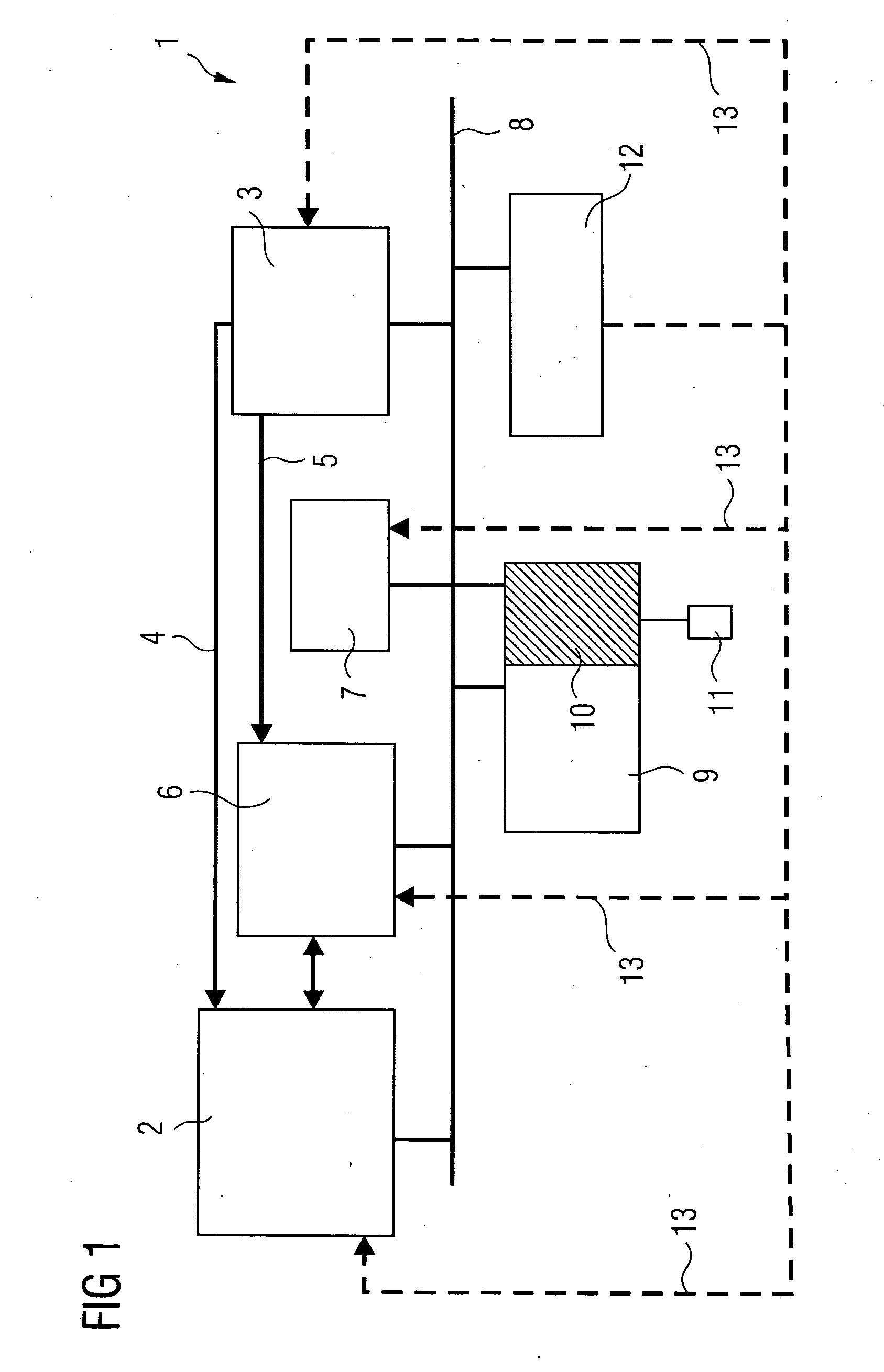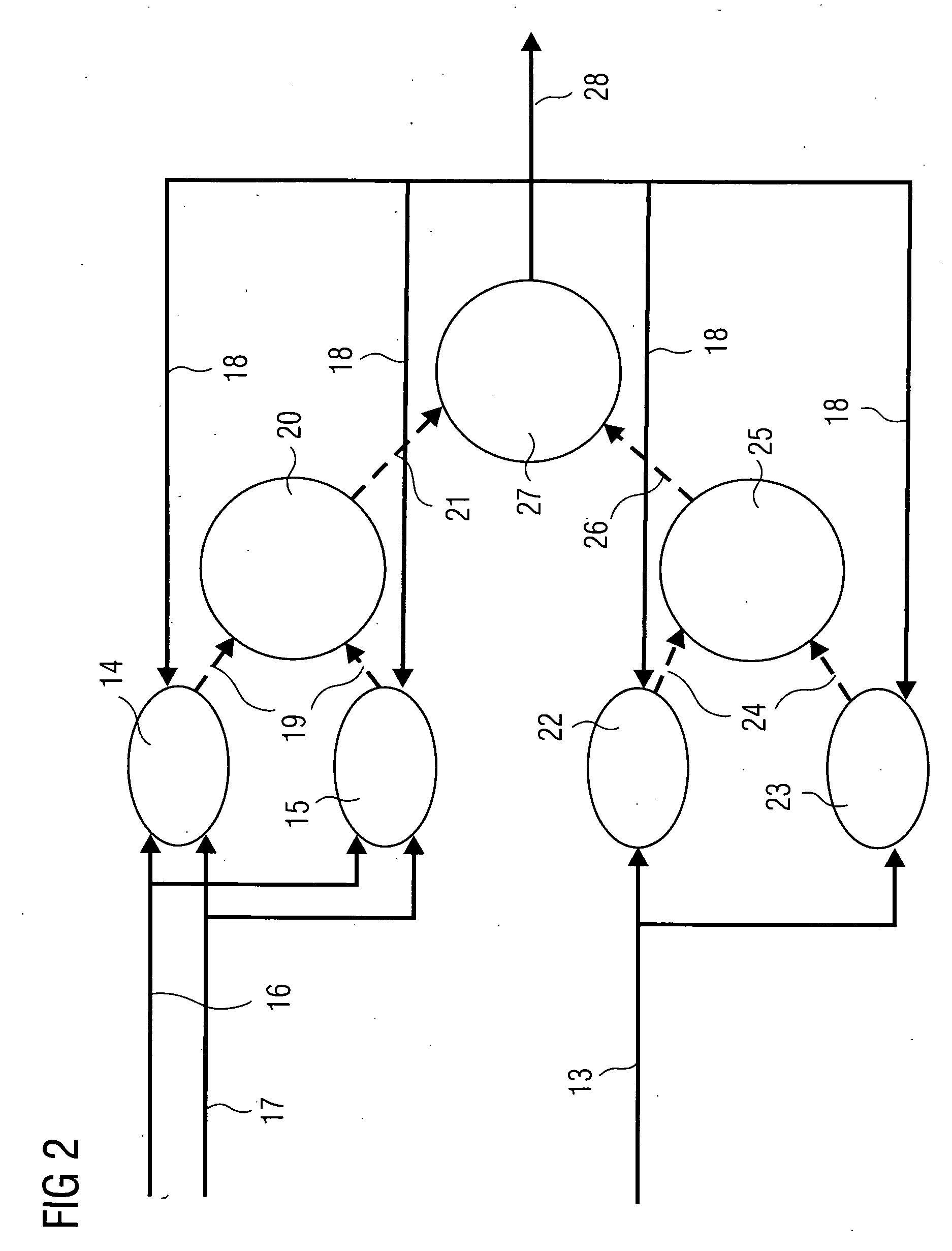Device and method for taking a high energy image
a high-energy image and image technology, applied in the field of high-energy image devices, can solve the problems of difficult adjustment of angiography system, difficult detection of stents in x-ray image, and difficulty in reducing so as to reduce the susceptibility to error and eliminate human error
- Summary
- Abstract
- Description
- Claims
- Application Information
AI Technical Summary
Benefits of technology
Problems solved by technology
Method used
Image
Examples
Embodiment Construction
[0020]FIG. 1 shows an x-ray system 1 having a radiation source 2. The radiation source 2 comprises, for example, a high voltage generator and an x-ray emitter with different coiled filaments, beam apertures and various radiation filters. The radiation source 2 sends x-radiation (not shown in FIG. 1) to an x-ray detector 3 which is, for example, a flat-panel detector with additional dose measurement. The recording of the x-ray image is influenced using control data 4 on the part of the x-ray detector 3. In particular, after the start of recording, the radiation characteristics of the radiation source 2 are re-adjusted as a function of the x-radiation received by the x-ray detector 3, as the weight or size of a patient is only to a limited extent a measure of the x-radiation to be expected. Therefore, at the start of recording, an initial setting is generally used and re-adjusted as recording proceeds.
[0021] The taking of the x-ray image causes image data 5 to be generated in the x-r...
PUM
 Login to View More
Login to View More Abstract
Description
Claims
Application Information
 Login to View More
Login to View More - R&D
- Intellectual Property
- Life Sciences
- Materials
- Tech Scout
- Unparalleled Data Quality
- Higher Quality Content
- 60% Fewer Hallucinations
Browse by: Latest US Patents, China's latest patents, Technical Efficacy Thesaurus, Application Domain, Technology Topic, Popular Technical Reports.
© 2025 PatSnap. All rights reserved.Legal|Privacy policy|Modern Slavery Act Transparency Statement|Sitemap|About US| Contact US: help@patsnap.com



